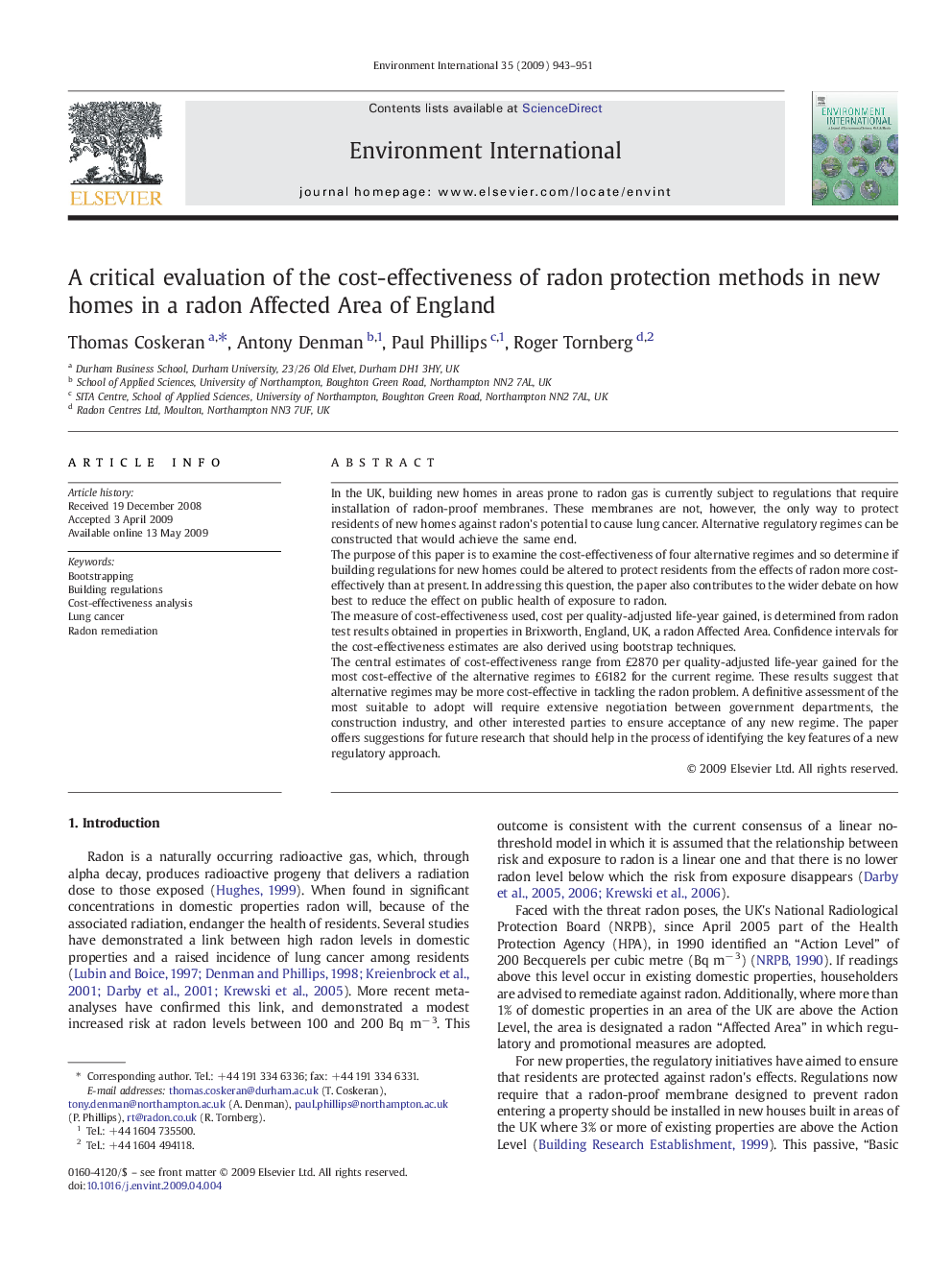| Article ID | Journal | Published Year | Pages | File Type |
|---|---|---|---|---|
| 4423294 | Environment International | 2009 | 9 Pages |
In the UK, building new homes in areas prone to radon gas is currently subject to regulations that require installation of radon-proof membranes. These membranes are not, however, the only way to protect residents of new homes against radon's potential to cause lung cancer. Alternative regulatory regimes can be constructed that would achieve the same end.The purpose of this paper is to examine the cost-effectiveness of four alternative regimes and so determine if building regulations for new homes could be altered to protect residents from the effects of radon more cost-effectively than at present. In addressing this question, the paper also contributes to the wider debate on how best to reduce the effect on public health of exposure to radon.The measure of cost-effectiveness used, cost per quality-adjusted life-year gained, is determined from radon test results obtained in properties in Brixworth, England, UK, a radon Affected Area. Confidence intervals for the cost-effectiveness estimates are also derived using bootstrap techniques.The central estimates of cost-effectiveness range from £2870 per quality-adjusted life-year gained for the most cost-effective of the alternative regimes to £6182 for the current regime. These results suggest that alternative regimes may be more cost-effective in tackling the radon problem. A definitive assessment of the most suitable to adopt will require extensive negotiation between government departments, the construction industry, and other interested parties to ensure acceptance of any new regime. The paper offers suggestions for future research that should help in the process of identifying the key features of a new regulatory approach.
